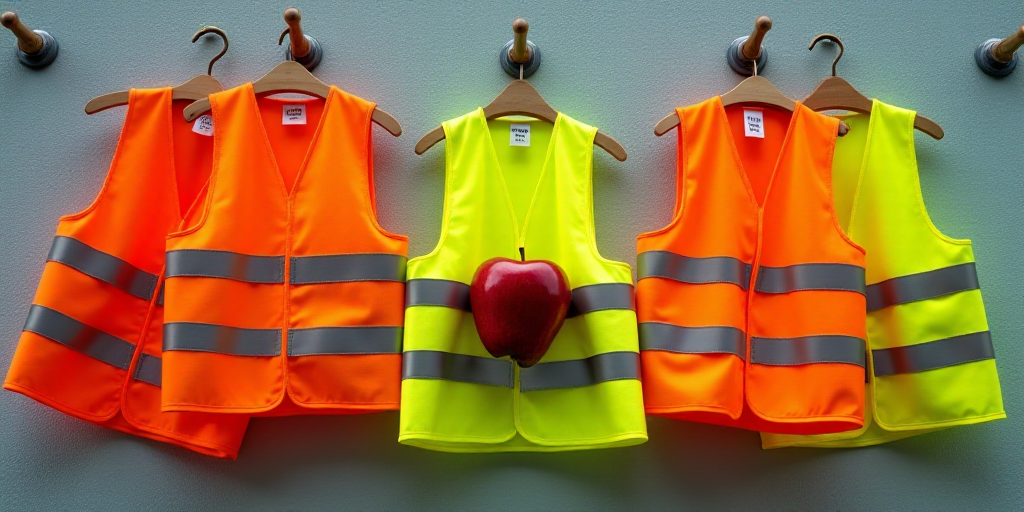Introduction to NOM-017
On September 28, the updated NOM-017, a regulation concerning personal protective equipment (PPE) in the workplace, came into effect in Mexico. This regulation mandates companies to ensure their workers’ safety by providing certified PPE.
Importance of NOM-017
With 610,751 work-related risks reported in Mexico in 2024 according to the Instituto Mexicano del Seguro Social (IMSS), worker safety is of paramount importance. Of these, 418,514 were workplace accidents and 16,880 were occupational diseases. However, the Programa de Autogestión en Seguridad y Salud en el Trabajo (PASST) demonstrates that prevention can significantly reduce incidents.
The STPS’s First Report of Labor 2024-2025 indicates that among the 3,552 companies enrolled in PASST, there was a 1.9% to 0.72% reduction in the labor accident rate.
Types of Risks Identified by NOM-017
NOM 017 outlines new obligations, including identifying and analyzing various risks workers face based on their job positions and areas. These risks include:
- Physical Risks: Derived from the work environment, such as noise, vibrations, poor lighting, radiation, extreme temperatures, and electrical hazards.
- Mechanical Risks: Caused by machinery and tools, including cuts, abrasions, punctures, contusions, impacts from object detachment or projection, entrapments, crushing, and burns.
- Chemical Risks: Resulting from exposure to hazardous, toxic, irritating, corrosive, sensitizing, mutagenic, carcinogenic, or teratogenic substances in raw materials, finished products, intermediates, or waste.
- Biological Risks: From exposure to living organisms that can harm health, such as viruses, bacteria, and fungi.
In accordance with the Federal Labor Law (LFT), employers must inform workers about the risks they are exposed to and provide necessary PPE and work clothing if required.
PPE Based on Risk
With NOM-017’s implementation, employers must detail the activities workers perform, anatomical regions exposed to risks, required PPE and clothing, as well as provide training and instruction.
For instance, to protect the head, employers can provide impact-resistant helmets, dielectric, or capes. If the face or eyes are exposed, they must provide safety glasses and welding face shields.
For ear protection, employers should offer earplugs or earmuffs. If the risk threatens respiratory systems, they must provide particulate respirators, gas and vapor respirators, or self-contained breathing apparatus with air lines based on activity needs.
To safeguard upper limbs, employers must provide chemical-resistant, fire-resistant, heat-resistant, or mechanical protection gloves and sleeves. For lower limbs, occupational footwear, toe protectors, dielectric, metatarsal protection, conductive, puncture-resistant, chemical-resistant, waterproof boots or socks are necessary.
For the torso, fire-resistant or heat-resistant clothing, bats, or encapsulating clothing against hazardous substances should be provided. For workers in height-related activities or confined spaces, fall protection equipment and gas detectors must be offered.
NOM-017 and Subcontracted Services
Specialized service workers must also be informed about the risks they face and provided with necessary PPE, which they should wear at all times.
Visitors and contractors must have certified PPE during their stay at the workplace. The equipment should contain manufacturer information, including technical data sheets about its protection capacity.
Employers must ensure PPE is in good condition before, during, and after use. They should share care and operation information, as well as limitations of the equipment.
If PPE shows defects, wear, or malfunction that cannot be repaired, it must be discarded and replaced with a new one. Employers should also facilitate decontamination and cleaning actions for equipment exposed to contaminants.
Accessibility of Instructions
NOM 017 requires that indications, instructions, or procedures be readily available for workers’ consultation.
NOM-017 is mandatory for all workplaces requiring PPE, and noncompliant workplaces may face penalties following its implementation.






